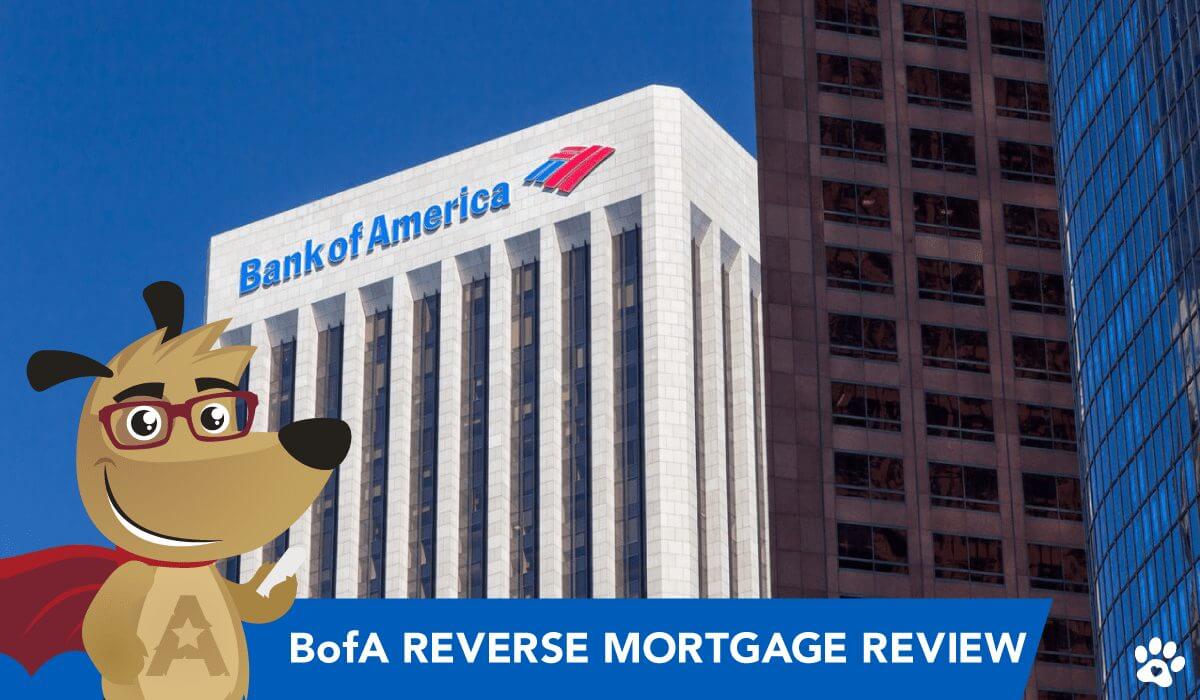Bank of America Reverse Mortgage Review (2025 Update)
 |
Michael G. Branson, CEO of All Reverse Mortgage, Inc., and moderator of ARLO™, has 45 years of experience in the mortgage banking industry. He has devoted the past 20 years to reverse mortgages exclusively. (License: NMLS# 14040) |
 |
All Reverse Mortgage's editing process includes rigorous fact-checking led by industry experts to ensure all content is accurate and current. This article has been reviewed, edited, and fact-checked by Cliff Auerswald, President and co-creator of ARLO™. (License: NMLS# 14041) |
Back in the early 2000s, much of the volume of reverse mortgages in the U.S. was attributed to big banks, including Bank of America. Today, that landscape has changed. Bank of America began in the reverse mortgage space with a small retail channel, before ramping up its operations through the acquisition of Seattle Mortgage reverse mortgage business in 2007.
The company then grew as both a retail and wholesale lender, meaning it offered HECM loans through its retail branches and closed loans that were originated by mortgage brokers across the country. Before exiting the market, Bank of America was the second-largest retail lender, and was the second-largest wholesale lender, with more than 18% market share in wholesale.
Around the time of its exit, many banks and mortgage lenders were changing their operations due to the Great Recession and the impact it had on the housing market.

Why did Bank of America stop offering reverse mortgages?
When Bank of America announced it would no longer offer reverse mortgages, the bank’s executives cited a focus on the company’s “core” offerings and moving “the unit’s operational resources into other critical areas serving customers.” At the time, BofA continued serving its existing customers who had already taken out reverse mortgages.
“We made the strategic decision to exit the reverse business due to competing demands and priorities that require investments and resources be focused on other key areas of our business,” Doug Jones, Consumer Sales and Institutional Mortgage Services executive for Bank of America Home Loans said at the time.
Around the same time, Bank of America also announced it was selling its Balboa Insurance company, with its exit from reverse mortgage lending as an additional step to focusing on core operations.
MARKET FACTORS:
- The Great Recession started in 2007-2008, leading to uncertain home values and home price declines across the U.S.
- Bank regulations increased as a result of the Dodd-Frank Act, passed in 2010

Will Bank of America Bring Back Reverse Mortgages?
There’s nothing stopping Bank of America from re-entering the reverse mortgage space, and many have speculated that big banks could come back one day. At the present time, most of the best reverse mortgage companies are non-bank mortgage companies, including All Reverse Mortgage®, American Advisors Group, Finance of America Reverse, One Reverse Mortgage, and Reverse Mortgage Funding.
Many existing banks are in the reverse mortgage space today; they tend to be regional or small national banks with a federal charter. Banks such as M&T Bank, Quontic Bank, Magnolia Bank and Resolute Bank, among many others, continue to offer reverse mortgages.
While prospective borrowers are not able to place a reverse mortgage application through a Bank of America retail branch today, loan originators who work for BofA may be able to refer customers to trusted reverse mortgage professionals who can help.
Bank of America Reverse Mortgage: Pros and Cons
| PROS | CONS |
|---|---|
| Recognizable brand. Introduced industry first Jumbo reverse mortgage with line of credit option | Sold reverse mortgage servicing portfolio to Champion Mortgage and no longer services the loans they originated |
| 4,411 branches across the US | Involved in many reverse mortgage non-borrowing spouse lawsuits |
| Approved by HUD - Housing and Urban Development | No longer provides reverse mortgage services |
Bank of America Reverse Mortgages Originated
| Year | Loans | National | Market Share |
|---|---|---|---|
| 2007 | 153 | 107,558 | 1% |
| 2008 | 3,129 | 112,154 | 3% |
| 2009 | 8,644 | 114,692 | 8% |
| 2010 | 7,879 | 79,106 | 10% |
| 2011 | 153 | 73,131 | .02% |
Source: https://apps.hud.gov/pub/chums/f17fvc/hecm.cfm
Summary
- Bank of America, at one time, was a major lender in the Home Equity Conversion Mortgage (HECM) market
- The bank operated both retail and wholesale reverse mortgage channels
- Bank of America leadership decided to exit the reverse mortgage business in 2011
Where to Get a Reverse Mortgage?
There are many active lenders in the reverse mortgage space today — including both banks and non-bank lenders — as well as brokers who can help prospective borrowers navigate the different loan options and available interest rates.
A good place to begin is gathering a few pieces of information including your age (and the age of your spouse, if you are married), and your home address so that a reverse mortgage calculator can give a rough estimate of the amount you may be able to borrow.
ARLO recommends these helpful resources:

Have a Question About Reverse Mortgages?




 Michael G. Branson
Michael G. Branson Cliff Auerswald
Cliff Auerswald

July 29th, 2023
August 10th, 2023
March 29th, 2023
March 31st, 2023
April 27th, 2022
May 2nd, 2022
September 1st, 2020
September 1st, 2020
December 12th, 2019
December 14th, 2019
July 23rd, 2019
July 23rd, 2019
March 27th, 2019
March 27th, 2019
March 15th, 2019
March 15th, 2019